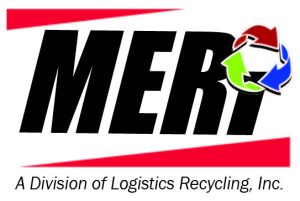
The violations are different, but the first line always reads the same when it comes to these 12 medical waste disposal compliance mistakes.
“Dear ‘Person’s Name’, The Department of Natural Resources has reason to believe ‘Company Name’ is in violation of Wisconsin’s hazardous waste laws.” Fortunately, by avoiding some common compliance issues, you can avoid even receiving a letter like this.
Perhaps the worst part of receiving such a letter isn’t the first line, but one of the last. That’s where the DNR informs you of the possible penalties you face. “Penalties of up to $25,000 for each day of violation.”
The good news is that receiving this letter is entirely preventable. While the following list isn’t exhaustive, staying clear of the these 12 mistakes. They can help ensure you remain compliant with the DNR and Department of Transportation’s rules for proper medical waste disposal.
Common Compliance Mistakes for Medical Waste Disposal
Here are 12 medical waste disposal compliance mistakes to watch out for:
1. Improper packaging for transportation
Infectious waste must be transported in rigid containers. Containers must be have the approval of the Department of Transportation. They must be leak-proof, spill-proof, puncture resistant and reusable.
This rule is most often broken when people transport sharps. Years ago, people disposed of sharps in empty milk jugs or laundry detergent containers. Nowadays, using these containers for sharps disposal is not a good idea. Needles often poke through. And, needles sticking out of containers pose a serious threat to transportation personnel.
2. Improper manifestation of waste destruction
The process of storing and destroying hazardous waste must be fully transparent to the DNR. They require a manifest that proves shipment and destruction. This process is also known as “cradle to grave” manifestation.
When you use a medical waste disposal company, it will give you a copy of a manifest noting the time your material gets picked up to the time it gets to the treatment plant, to the time it is officially destroyed.
3. Failing to categorize waste
When storing waste, it must be properly categorized as hazardous or nonhazardous waste. Labels delineating a container’s categorization must be visible on all sides. The label must also include a date when the container first came into the storage facility area.
4. Transporting large amounts of waste yourself
You always need a permit to transport 50 pounds or more of medical waste. This is regardless of whether it’s in approved DOT containers. Unfortunately, applying for a permit is expensive and requires hours of training classes. That’s why most companies outsource their medical waste disposal.
5. Sewering hazardous waste
Sewering hazardous waste must never happen. Regardless of if you sewer hazardous material on purpose or by accident, the DNR will cite you for doing so. However, if you dump hazardous waste on purpose, you could also face jail time.
6. Failing to conduct inspections of hazardous waste
An employee must inspect your hazardous waste containers every week. This ensures they are good. The inspector must fill out a document fully disclosing the inspection, with their initials and the date.
Many medical facilities already charge an employee with inspecting other equipment, like fire extinguishers and eye washers. We find it’s easiest to simply incorporate the hazardous waste storage inspection into this routine.
7. Discarding waste in the wrong container
Each kind of waste must be categorized separately. For example, you can not mix standard trash with medical waste. The general rule is that the higher risk an infectious waste product poses to humans, the more rigid of a container you need. The CFR 49 Code of Federal Regulations can tell you exactly what container you need for each kind of waste. Here’s a general breakdown:
- Discard and store sharps in a sharps container
- Anything drippable, pourable, or that can flake off after drying must go in a Red Bag waste bag
- Pills must go in a sealed plastic container with the pharmaceutical waste
8. Inadequate employee training
Any and all employees who contact, dispense or delivery of hazardous waste must go through training on proper disposal. Not every employee needs to go through the entire eight-hour training session. everyone must be familiar with the basic proper disposal and transportation rules.
Most classes will train employees on the specific aspects of CFR 49 – 172.704 that pertain to their individual responsibilities. Documentation needs to take place with every training session.
9. Lack of emergency contingency plans
Any facility with potentially hazardous waste must write an emergency response plan detailing the procedures in the event of an emergency, such as a chemical spill.
10. Improper labeling of storage areas
You may store Multiple kinds of waste in the same room. However, signs on the doors must signify every type of waste inside.
11. Failing to diagram proper waste disposal procedures
Every facility that stores medical waste must have a diagram that tells employees where to discard waste. Often, it show the various colors by type of waste.
12. Failing to label light bulbs as “universal waste”
The definition for universal waste is as follows:
“A category of waste materials designated as hazardous waste, but containing materials that are very common.” So, going by this definition, universal waste includes light bulbs as well as certain batteries, pesticides and thermostats.
Most importantly, here’s the “Universal Waste Management Standards” document. It lists every product that is a universal waste in Wisconsin.
Receiving a notification of investigation is scary stuff. This is especially true when it is for failing to comply with governmental regulations regarding medical waste disposal. Otherwise, it can be a scary and costly experience.
Simply put, avoid these dozen common compliance mistakes to ensure you don’t receive a letter of your own.
Learn how to easily track, properly handle, and affordably dispose your biohazard or infectious waste.



